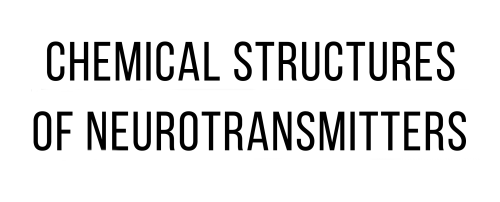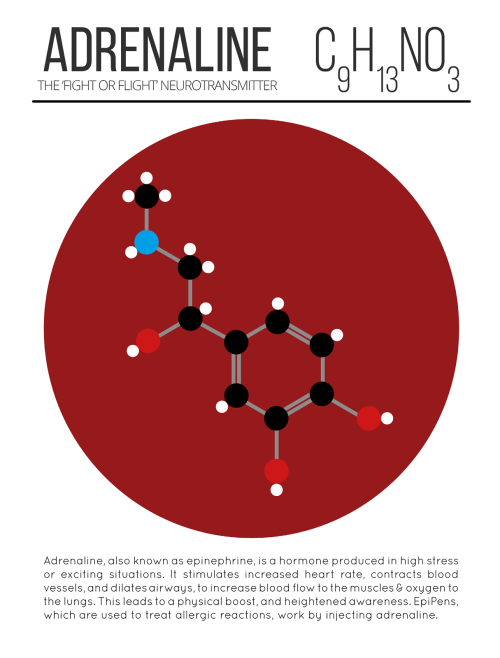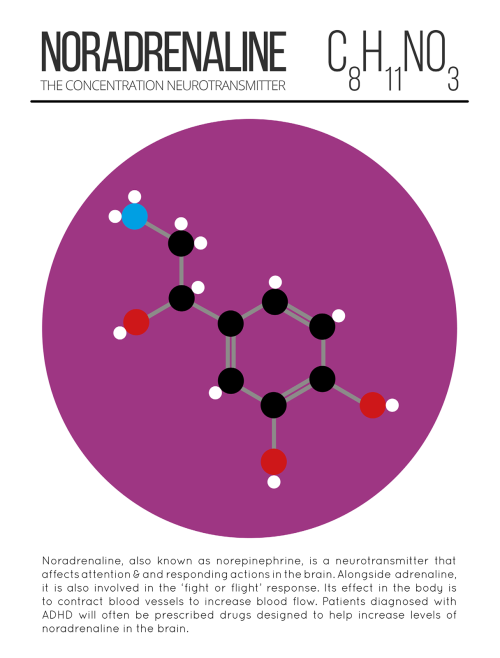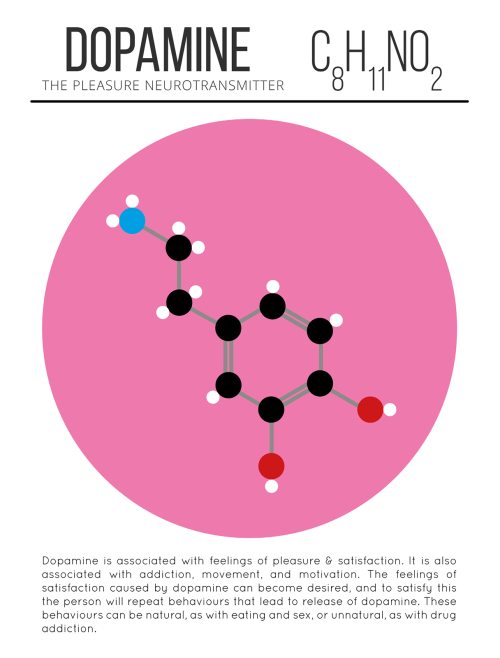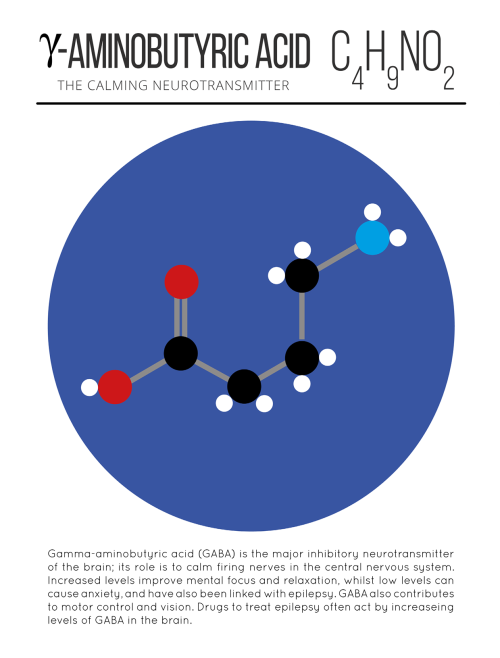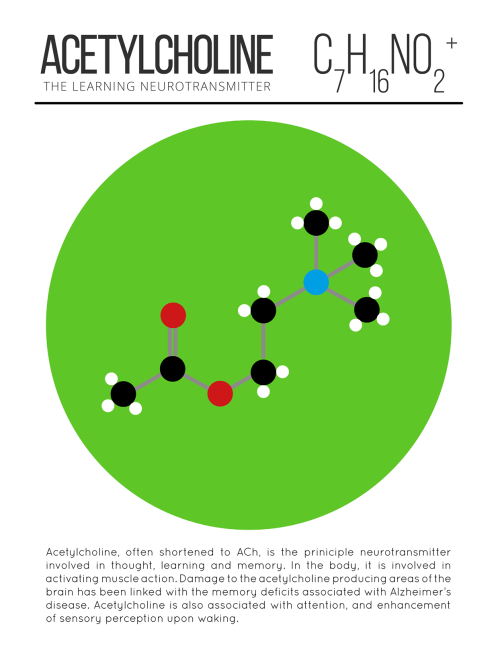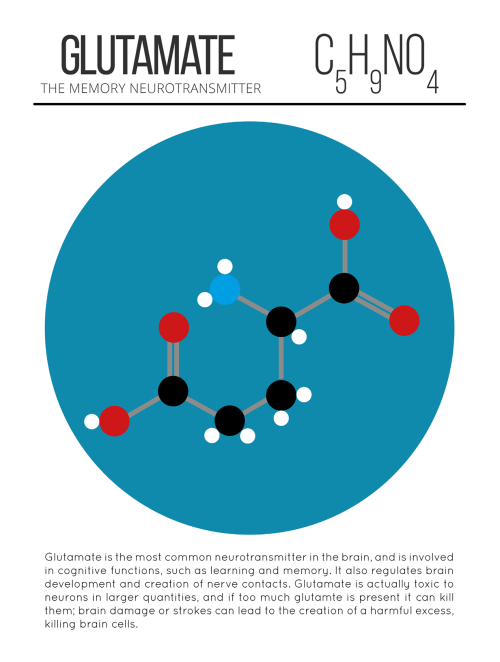Just Made A Bad Decision?
Just Made a Bad Decision?
Most people experience anxiety in their lives. For some, it is just a bad, passing feeling, but, for many, anxiety rules their day-to-day lives, even to the point of taking over the decisions they make.
Scientists at the University of Pittsburgh have discovered a mechanism for how anxiety may disrupt decision making. In a study published in The Journal of Neuroscience, they report that anxiety disengages a region of the brain called the prefrontal cortex (PFC), which is critical for flexible decision making. By monitoring the activity of neurons in the PFC while anxious rats had to make decisions about how to get a reward, the scientists made two observations. First, anxiety leads to bad decisions when there are conflicting distractors present. Second, bad decisions under anxiety involve numbing of PFC neurons.
The data indicates that anxiety has an exquisitely selective effect on neuronal activity that supports decision making, says Bita Moghaddam, the lead author of the study and a professor in the Department of Neuroscience within the Kenneth P. Dietrich School of Arts and Sciences. Up to now, scientists have mostly studied anxiety in animal models in the context of fear and measured how brain cells react to a threatening situation. But human anxiety is devastating, not merely because of how the person feels, but also because it can interfere with nearly all aspects of daily life including decision making, Moghaddam says.
Pitt researchers studied this aspect of anxiety by monitoring the activity of a large number of neurons as rats made decisions about which choice was most optimal for receiving a reward. They compared behavior and neuronal activity in two groups: one group that had a placebo injection and another that got a low dose of an anxiety-inducing drug.
As with many people who suffer from anxiety but go through day-to-day life and make decisions, the anxious rats completed the decision-making task and, actually, did not do too badly. But they made far more mistakes when the correct choice involved ignoring distracting information. “A brain locus of vulnerability for these anxiety-induced mistakes was a group of cells in the PFC that specifically coded for choice. Anxiety weakened the coding power of these neurons.
“We have had a simplistic approach to studying and treating anxiety. We have equated it with fear and have mostly assumed that it over-engages entire brain circuits. But this study shows that anxiety disengages brain cells in a highly specialized manner.”
Perhaps, down the line, this better understanding of the brain mechanics behind anxiety and decision making, she says, could lead to better treatment of anxiety in people and, subsequently, better outcomes in the treatment of psychiatric disorders.
More Posts from Science-is-magical and Others
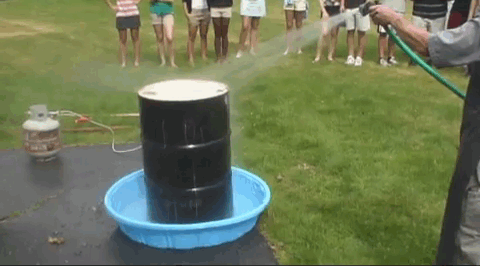
the drum is filled with hot steam and then sprayed with cold water. the pressure on the outside of the drum is far more than inside. the pressures try to maintain and find balance taking the drum as a casualty.
Flying to New Heights With the Magnetospheric Multiscale Mission
A mission studying Earth’s magnetic field by flying four identical spacecraft is headed into new territory.

The Magnetospheric Multiscale mission, or MMS, has been studying the magnetic field on the side of Earth facing the sun, the day side – but now we’re focusing on something else. On February 9, MMS started the three-month-long process of shifting to a new orbit.

One key thing MMS studies is magnetic reconnection – a process that occurs when magnetic fields collide and re-align explosively into new positions. The new orbit will allow MMS to study reconnection on the night side of the Earth, farther from the sun.

Magnetic reconnection on the night side of Earth is thought to be responsible for causing the northern and southern lights.

To study the interesting regions of Earth’s magnetic field on the night side, the four MMS spacecraft are being boosted into an orbit that takes them farther from Earth than ever before. Once it reaches its final orbit, MMS will shatter its previous Guinness World Record for highest altitude fix of a GPS.
To save on fuel, the orbit is slowly adjusted over many weeks. The boost to take each spacecraft to its final orbit will happen during the first week of April.

On April 19, each spacecraft will be boosted again to raise its closest approach to Earth, called perigee. Without this step, the spacecraft would be way too close for comfort – and would actually reenter Earth’s atmosphere next winter!

The four MMS spacecraft usually fly really close together – only four miles between them – in a special pyramid formation called a tetrahedral, which allows us to examine the magnetic environment in three dimensions.

But during orbit adjustments, the pyramid shape is broken up to make sure the spacecraft have plenty of room to maneuver. Once MMS reaches its new orbit in May, the spacecraft will be realigned into their tetrahedral formation and ready to do more 3D magnetic science.

Learn more about MMS and find out what it’s like to fly a spacecraft.
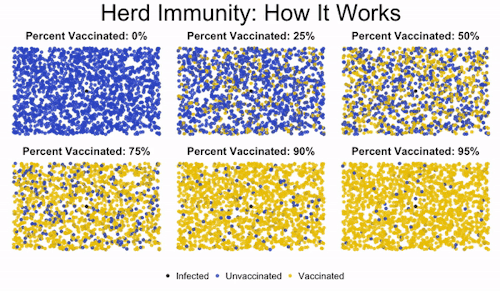
Herd immunity is the idea that if enough people get immunized against a disease, they’ll create protection for even those who aren’t vaccinated. This is important to protect those who can’t get vaccinated, like immunocompromised children.
You can see in the image how low levels of vaccination lead to everyone getting infected. Medium levels slow down the progression of the illness, but they don’t offer robust protection to the unvaccinated. But once you read a high enough level of vaccination, the disease gets effectively road-blocked. It can’t spread fast enough because it encounters too many vaccinated individuals, and so the majority of the population (even the unvaccinated people) are protected.
Find out more here.

Researchers at King’s College London found that the drug Tideglusib stimulates the stem cells contained in the pulp of teeth so that they generate new dentine – the mineralised material under the enamel.
Teeth already have the capability of regenerating dentine if the pulp inside the tooth becomes exposed through a trauma or infection, but can only naturally make a very thin layer, and not enough to fill the deep cavities caused by tooth decay.
But Tideglusib switches off an enzyme called GSK-3 which prevents dentine from carrying on forming.
Scientists showed it is possible to soak a small biodegradable sponge with the drug and insert it into a cavity, where it triggers the growth of dentine and repairs the damage within six weeks.
The tiny sponges are made out of collagen so they melt away over time, leaving only the repaired tooth.
Paint colors designed by neural network, Part 2

So it turns out you can train a neural network to generate paint colors if you give it a list of 7,700 Sherwin-Williams paint colors as input. How a neural network basically works is it looks at a set of data - in this case, a long list of Sherwin-Williams paint color names and RGB (red, green, blue) numbers that represent the color - and it tries to form its own rules about how to generate more data like it.
Last time I reported results that were, well… mixed. The neural network produced colors, all right, but it hadn’t gotten the hang of producing appealing names to go with them - instead producing names like Rose Hork, Stanky Bean, and Turdly. It also had trouble matching names to colors, and would often produce an “Ice Gray” that was a mustard yellow, for example, or a “Ferry Purple” that was decidedly brown.
These were not great names.

There are lots of things that affect how well the algorithm does, however.
One simple change turns out to be the “temperature” (think: creativity) variable, which adjusts whether the neural network always picks the most likely next character as it’s generating text, or whether it will go with something farther down the list. I had the temperature originally set pretty high, but it turns out that when I turn it down ever so slightly, the algorithm does a lot better. Not only do the names better match the colors, but it begins to reproduce color gradients that must have been in the original dataset all along. Colors tend to be grouped together in these gradients, so it shifts gradually from greens to browns to blues to yellows, etc. and does eventually cover the rainbow, not just beige.
Apparently it was trying to give me better results, but I kept screwing it up.
Raw output from RGB neural net, now less-annoyed by my temperature setting

People also sent in suggestions on how to improve the algorithm. One of the most-frequent was to try a different way of representing color - it turns out that RGB (with a single color represented by the amount of Red, Green, and Blue in it) isn’t very well matched to the way human eyes perceive color.
These are some results from a different color representation, known as HSV. In HSV representation, a single color is represented by three numbers like in RGB, but this time they stand for Hue, Saturation, and Value. You can think of the Hue number as representing the color, Saturation as representing how intense (vs gray) the color is, and Value as representing the brightness. Other than the way of representing the color, everything else about the dataset and the neural network are the same. (char-rnn, 512 neurons and 2 layers, dropout 0.8, 50 epochs)
Raw output from HSV neural net:

And here are some results from a third color representation, known as LAB. In this color space, the first number stands for lightness, the second number stands for the amount of green vs red, and the third number stands for the the amount of blue vs yellow.
Raw output from LAB neural net:

It turns out that the color representation doesn’t make a very big difference in how good the results are (at least as far as I can tell with my very simple experiment). RGB seems to be surprisingly the best able to reproduce the gradients from the original dataset - maybe it’s more resistant to disruption when the temperature setting introduces randomness.
And the color names are pretty bad, no matter how the colors themselves are represented.
However, a blog reader compiled this dataset, which has paint colors from other companies such as Behr and Benjamin Moore, as well as a bunch of user-submitted colors from a big XKCD survey. He also changed all the names to lowercase, so the neural network wouldn’t have to learn two versions of each letter.
And the results were… surprisingly good. Pretty much every name was a plausible match to its color (even if it wasn’t a plausible color you’d find in the paint store). The answer seems to be, as it often is for neural networks: more data.
Raw output using The Big RGB Dataset:

I leave you with the Hall of Fame:
RGB:

HSV:

LAB:

Big RGB dataset:

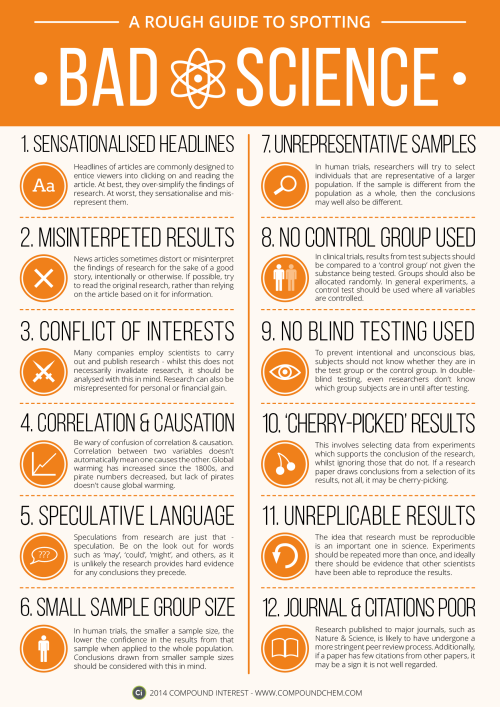
Version 1 of ‘A Rough Guide to Spotting Bad Science’. Thanks for everyone’s suggestions earlier in the week, attempted to include as many of them as possible!
Download link here: http://wp.me/p4aPLT-ap

Redrawing the brain’s motor map
Neuroscientists at Emory have refined a map showing which parts of the brain are activated during head rotation, resolving a decades-old puzzle. Their findings may help in the study of movement disorders affecting the head and neck, such as cervical dystonia and head tremor.
The results were published in Journal of Neuroscience.
In landmark experiments published in the 1940s and 50s, Canadian neurosurgeon Wilder Penfield and colleagues determined which parts of the motor cortex controlled the movements of which parts of the body.
Penfield stimulated the brain with electricity in patients undergoing epilepsy surgery, and used the results to draw a “motor homunculus”: a distorted representation of the human body within the brain. Penfield assigned control of the neck muscles to a region between those that control the fingers and face, a finding inconsistent with some studies that came later.
Using modern functional MRI (magnetic resonance imaging), researchers at Emory University School of Medicine have shown that the neck’s motor control region in the brain is actually between the shoulders and trunk, a location that more closely matches the arrangement of the body itself.
“We can’t be that hard on Penfield, because the number of cases where he was able to study head movement was quite limited, and studying head motion as he did, by applying an electrode directly to the brain, creates some challenges,” says lead author Buz Jinnah, MD, professor of neurology, human genetics and pediatrics at Emory University School of Medicine.
The new location for the neck muscles makes more sense, because it corresponds to a similar map Penfield established of the sense of touch (the somatosensory cortex), Jinnah says.
Participants in brain imaging studies need to keep their heads still to provide accurate data, so volunteers were asked to perform isometric muscle contraction. They attempted to rotate their heads to the left or the right, even though head movement was restricted by foam padding and restraining straps.
First author Cecilia Prudente, a graduate student in neuroscience who is now a postdoctoral associate at the University of Minnesota, developed the isometric head movement task and obtained internal funding that allowed the study to proceed.
She and Jinnah knew that isometric exercises for the wrist activated the same regions of the motor cortex as wrist movements, and used that as a reference point in their study. During brain imaging, they were able to check that particular muscles were being tensed by directly monitoring volunteers’ muscles electronically.
When volunteers contracted their neck muscles, researchers were able to detect activation in other parts of the brain too, such as the cerebellum and the basal ganglia, which are known to be involved in movement control. This comes as no surprise, Jinnah says, since these regions also control movements of the hands and other body parts.
Prudente, Jinnah and colleagues have conducted a similar study with cervical dystonia patients, with the goal of comparing the patterns of brain activation between healthy volunteers and the patients. Cervical dystonia is a painful condition in which the neck muscles contract involuntarily and the head posture is distorted.
“These results may help guide future studies in humans and animals, as well as medical or surgical interventions for cervical dystonia and other disorders involving abnormal head movements,” Prudente says.
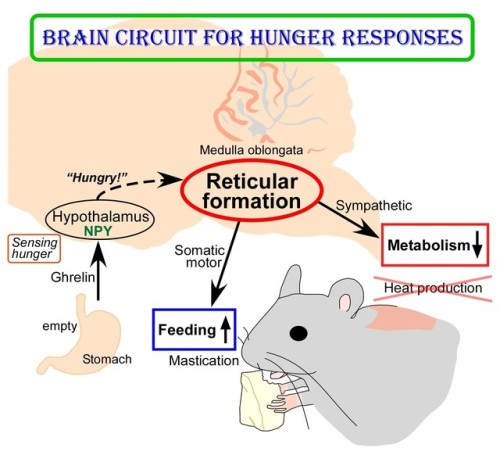
(Image caption: The empty stomach releases the hormone called ghrelin. By receiving ghrelin, the hypothalamus in the brain senses hunger and produces “hunger signaling” through the action of neuropeptide Y (NPY). The hunger signaling activates neurons in the reticular formation of the medulla oblongata, which then inhibit sympathetic output to reduce metabolic heat production and simultaneously provide masticatory motor rhythm to facilitate feeding. Credit: © 2017 Yoshiko Nakamura)
New Insights into Brain Circuit for Hunger Responses during Starvation
The human body responds to starving conditions, such as famine, to promote the chance of survival. It reduces energy expenditure by stopping heat production and promotes feeding behavior. These “hunger responses” are activated by the feeling of hunger in the stomach and are controlled by neuropeptide Y (NPY) signals released by neurons in the hypothalamus. However, how NPY signaling in the hypothalamus elicits the hunger responses has remained unknown.
Sympathetic motor neurons in the medulla oblongata are responsible for heat production by brown adipose tissue (BAT). Researchers centered at Nagoya University have now tested whether the heat-producing neurons respond to the same hypothalamic NPY signals that control hunger responses. They injected NPY into the hypothalamus of rats and tested the effect on heat production. Under normal conditions, blocking inhibitory GABAergic receptors or stimulating excitatory glutamatergic receptors in the sympathetic motor neurons induced heat production in BAT. After NPY injection, stimulating glutamatergic receptors did not produce heat, but inhibiting GABAergic receptors did. The study was reported in Cell Metabolism.
“This indicated that hypothalamic NPY signals prevent BAT thermogenesis by using inhibitory GABAergic inputs to sympathetic motor neurons,” study lead author Yoshiko Nakamura says.
Retrograde and anterograde tracing with fluorescent dyes revealed which brain region provided the inhibitory GABAergic inputs to heat-producing motor neurons.
“Tracing experiments showed that sympathetic motor neurons are directly innervated by GABAergic inputs from reticular nuclei in the medulla oblongata,” corresponding author Kazuhiro Nakamura explains, “selective activation of these GABAergic reticular neurons inhibits BAT thermogenesis.”
The researchers’ further findings showed that GABAergic inputs from medullary reticular neurons are involved in hypothalamic NPY-mediated inhibition of heat production in BAT. This hunger response circuit probably explains why anorexic individuals suffer from hypothermia.
Interestingly, stimulation of these medullary reticular neurons prompted rats to begin chewing and feeding. This effect was similar to injecting NPY into the hypothalamus, suggesting that hypothalamic NPY signaling activates reticular neurons in the medulla oblongata to promote feeding and mastication during the hunger response.
Abnormal activation of these neurons under non-starved conditions may contribute to obesity. Understanding these mechanisms could lead to development of more effective treatments for obesity.
-
 theonewiththe-whales liked this · 6 years ago
theonewiththe-whales liked this · 6 years ago -
 indefinableheart liked this · 7 years ago
indefinableheart liked this · 7 years ago -
 jesterjoe45-blog liked this · 7 years ago
jesterjoe45-blog liked this · 7 years ago -
 science-is-magical reblogged this · 8 years ago
science-is-magical reblogged this · 8 years ago -
 sweeterdead reblogged this · 8 years ago
sweeterdead reblogged this · 8 years ago -
 whoucallinpinhead liked this · 8 years ago
whoucallinpinhead liked this · 8 years ago -
 dustinmc1977 liked this · 8 years ago
dustinmc1977 liked this · 8 years ago -
 emobluedinosaur liked this · 8 years ago
emobluedinosaur liked this · 8 years ago -
 iam-sincerelyher-blog liked this · 8 years ago
iam-sincerelyher-blog liked this · 8 years ago -
 thestarryskiesaboveme reblogged this · 8 years ago
thestarryskiesaboveme reblogged this · 8 years ago -
 thestarryskiesaboveme liked this · 8 years ago
thestarryskiesaboveme liked this · 8 years ago -
 wonderxwomyn liked this · 8 years ago
wonderxwomyn liked this · 8 years ago -
 fakenous liked this · 8 years ago
fakenous liked this · 8 years ago -
 bewarewheat liked this · 8 years ago
bewarewheat liked this · 8 years ago -
 freakingmindblowing reblogged this · 8 years ago
freakingmindblowing reblogged this · 8 years ago -
 freakingmindblowing liked this · 8 years ago
freakingmindblowing liked this · 8 years ago -
 zstripes21 liked this · 8 years ago
zstripes21 liked this · 8 years ago -
 thisdisasteristemporary liked this · 8 years ago
thisdisasteristemporary liked this · 8 years ago -
 matterforms liked this · 8 years ago
matterforms liked this · 8 years ago -
 ecchimagazine reblogged this · 8 years ago
ecchimagazine reblogged this · 8 years ago -
 flava-slav reblogged this · 8 years ago
flava-slav reblogged this · 8 years ago -
 lysergic-r0cky liked this · 9 years ago
lysergic-r0cky liked this · 9 years ago -
 reigncitydesigns liked this · 9 years ago
reigncitydesigns liked this · 9 years ago -
 whatsthatsuppostamean reblogged this · 9 years ago
whatsthatsuppostamean reblogged this · 9 years ago -
 whatsthatsuppostamean liked this · 9 years ago
whatsthatsuppostamean liked this · 9 years ago -
 tuesdaytali liked this · 9 years ago
tuesdaytali liked this · 9 years ago -
 littlespookykid liked this · 9 years ago
littlespookykid liked this · 9 years ago -
 psychofacts0816 reblogged this · 9 years ago
psychofacts0816 reblogged this · 9 years ago -
 caracorazon reblogged this · 9 years ago
caracorazon reblogged this · 9 years ago -
 weza liked this · 9 years ago
weza liked this · 9 years ago -
 moneydontrest liked this · 9 years ago
moneydontrest liked this · 9 years ago -
 maleencabe liked this · 9 years ago
maleencabe liked this · 9 years ago
